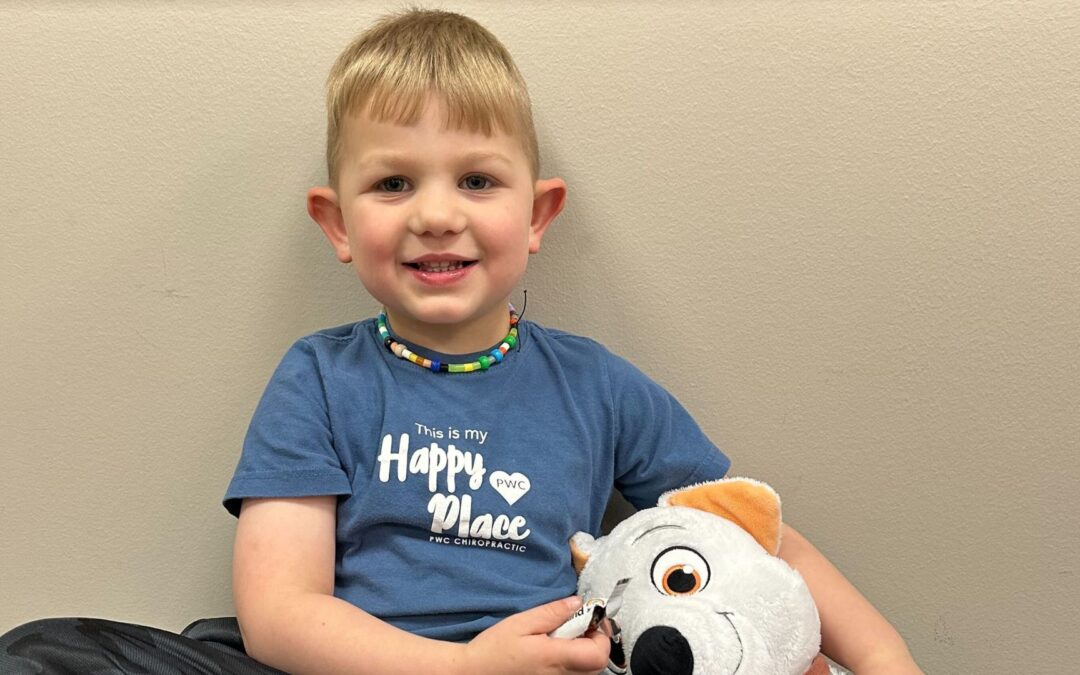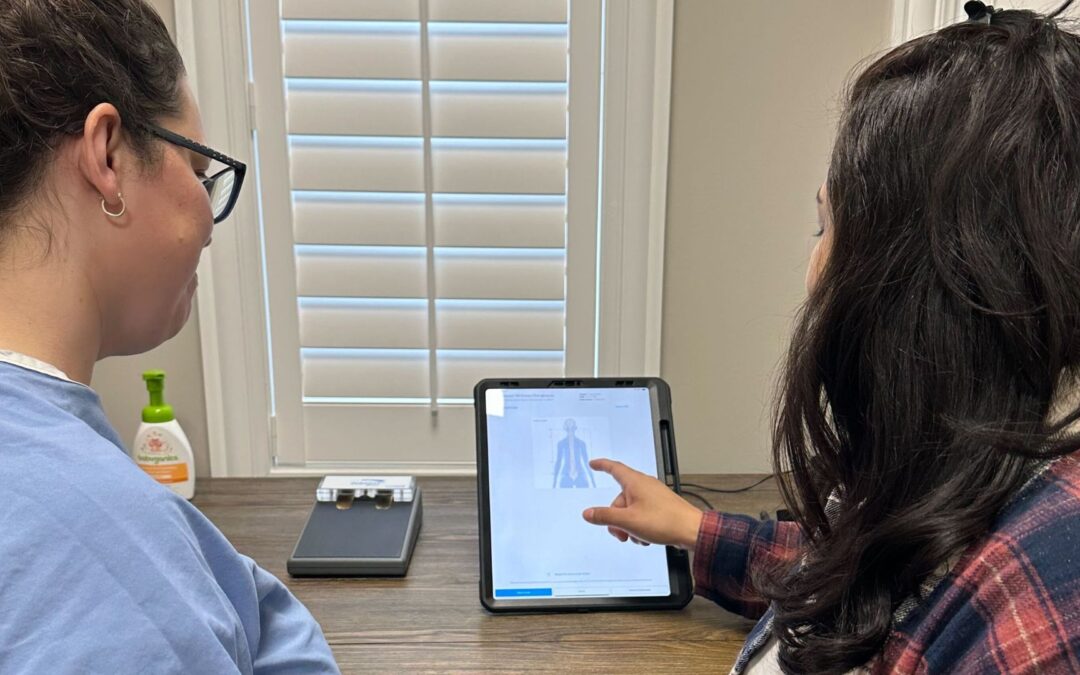In today’s world, where everything moves at a fast pace, and people are constantly connected digitally, anxiety has become a prevalent issue that affects individuals of all ages, especially our teens. As a parent of two teenagers and a pre-teen, I have seen firsthand how challenging it can be for them to deal with stress, anxiety, and social-emotional development in a world where 95% of their peers are glued to their phones at all times.
In this article, we will delve into the neuroscience behind anxiety, review the research that connects the massive uprise in mental health disorders in teens and young adults to the overuse of phones and social media, and explore drug-free, holistic approaches that can help our children build resilience and thrive in the face of adversity.
As renowned social psychologist Jonathan Haidt perfectly puts it, this is now the “Anxious Generation” because we’ve shifted childhood development from “play-based” to “phone-based” the consequences are often devastating.
The Dramatic Rise in Anxiety
In recent years, the prevalence of anxiety among children and young adults has skyrocketed, leaving parents, educators, and mental health professionals grappling with a growing crisis. Studies have revealed alarming increases in both anxiety and depression, particularly among teens and college students. Since 2010, major depression among teenagers has risen by a staggering 145% in girls and 161% in boys. Similarly, college students have experienced a 134% increase in anxiety and a 106% increase in depression.
These statistics paint a troubling picture of the mental health landscape facing today’s youth. But what is driving this steep rise in anxiety? While there is no single cause, experts point to a combination of factors that may be contributing to the problem.
The most important aspect of this article for parents to really understand is that it truly is a multitude of factors, many of which occurred very early in their child’s development and are easily overlooked. Then the exposure to toxins and technology later in life are often the “final straw” that causes the nervous system to shift into nonstop sympathetic “fight or flight” stress and anxiety mode. Therefore, in order to get full and complete recovery and resilience for your child we must address each of these factors and the underlying nervous system dysregulation and imbalance they led to.
The factors most commonly associated with the “hard wiring” of anxiety and emotional dysregulation within a child’s brain and nervous system include:
- High levels of stress and anxiety for the mother during the prenatal or pregnancy period
- Birth interventions and injuries to the brainstem and vagus nerve from things such as forceps, vacuum extraction, induction, c-section, and so forth
- Early childhood stressors and illnesses such as colic, constipation, chronic ear infections, eczema, sensory processing disorder, and delayed or missed milestones
Those three (3) are the earliest known triggers of altered neurological functioning and brain development that can lead to anxiety later in life. Then the more commonly known and also very important contributing factors also include:
- Increasing pressure to succeed academically, athletically, and professionally
- The pervasive influence of social media and technology
- The shutdowns and other overreactions to the COVID-19 pandemic.
- Reduced stigma surrounding mental health, leading to increased reporting and diagnosis
- Childhood trauma and adverse experiences, such as abuse, neglect, or family instability
- Genetic predisposition and family history of anxiety disorders
- Environmental factors, such as pollution, noise, and overcrowding
- Lifestyle factors, including poor sleep habits, lack of exercise, and unhealthy diets
It’s important for both parents and professionals to understand this one foundational truth regarding the neuroscience of anxiety – no matter what type or kind of stress the child was exposed to, the nervous system responds the same, with an excessive amount of sympathetic fight or flight response that over time (when exposed to early or chronic stress) becomes overactive and “stuck on” a vicious cycle.
Understanding Anxiety and Its Symptoms
Anxiety is a natural human response to perceived threats, often described as intense worry or fear about the future. It is a part of the “fight, flight, or freeze” response, which helps us react quickly to dangerous situations. However, when anxiety becomes chronic and overwhelming, it can significantly impact an individual’s quality of life.
Symptoms of anxiety can manifest in various ways, including:
– Feeling nervous, restless, or tense
– Having a sense of impending danger or doom
– Increased heart rate and rapid breathing
– Sweating, trembling, or feeling weak
– Difficulty concentrating or sleeping
– Gastrointestinal problems and immune challenges
– Tension in the neck, shoulders, and frequent headaches
Anxiety can also lead to sensory processing difficulties, impacting focus and cognitive function as the brain becomes preoccupied with emotional distress. If left unaddressed, chronic anxiety can result in muscle tension, postural changes, exhaustion, and withdrawal from daily activities, even in young children and teens.
The Impact of Technology on Anxiety
In the digital age, children are spending less time engaging in outdoor play and social interactions, instead opting for hours of screen time and social media usage. While some may dismiss this as harmless, research suggests that this shift in childhood experiences may be contributing to the rise in anxiety and other mental health challenges.
Jonathan Haidt, in his book “The Anxious Generation,” discusses how the rewiring of childhood due to technology is fueling the epidemic of mental illness. He argues that the lack of outdoor play and social interaction deprives children of important developmental milestones crucial for their mental and emotional well-being. Additionally, the constant digital connectivity and the pressure to maintain a perfect online image can harm the developing brain.
To promote resilience in the face of technological pressures, Haidt recommends setting age limits on phone and social media use, encouraging more unsupervised play, and fostering greater childhood independence.
Early Life Triggers of Anxiety
While technology plays a significant role in the rise of teen anxiety, it is essential to recognize other often-overlooked early life triggers that can set the stage for mental health challenges. We have termed these early sequential exposures to stress during “sensitive” or “critical” periods of development the “Perfect Storm” and they include:
- Fertility and pregnancy challenges, which can lead to maternal anxiety
- Birth interventions and trauma, such as C-sections, forceps, or vacuum extraction
- Early exposure to toxins and medications
These factors can contribute to an overactive sympathetic nervous system, nervous system dysregulation, and dysautonomia, a condition characterized by an imbalance in the autonomic nervous system.
The Neuroscience of Anxiety
Traditional medicine often focuses on the genetic and neurochemical aspects of anxiety, such as neurotransmitter imbalances. However, it is crucial to consider the role of environmental stressors and how they can alter brain structure and nervous system function.
The brain develops from the bottom up and back to front, with movement playing a vital role in healthy neurological development. The brainstem and the lower, posterior regions of the brain are more primitive and survival-oriented. In contrast, the prefrontal cortex, located in the front of the brain, is responsible for executive function and decision-making.
Early life stress and physical injury to the brainstem or neurospinal system can alter a child’s motor development, causing the brain and nervous system to remain stuck in a fight-or-flight state. This can hinder the development and function of the prefrontal cortex, leading to difficulties with emotional regulation and cognitive control.
Thankfully, emerging research continues to show that specific chiropractic adjustments can stimulate the prefrontal cortex and improve brain function. Additionally, chiropractic adjustments done in this way are known to help improve sleep, facilitate digestion, and reduce neuromuscular tension and fatigue, all of which help improve body-to-brain communication.
The cerebellum, amygdala, hippocampus, and prefrontal cortex all play significant roles in the experience and regulation of anxiety. Healthy body-to-brain and back-to-front signaling is essential for maintaining emotional balance and preventing the overstimulation of fear and anxiety responses.
Subluxation, the Vagus Nerve, and Dysautonomia
To fully understand the neurological basis of anxiety, it is important to familiarize oneself with three key concepts: subluxation, the vagus nerve, and dysautonomia.
Subluxation, a term used in Neurologically-Focused Chiropractic Care, refers to a combination of misalignment, fixation, and neurological interference that disrupts brain-to-body communication pathways. By reducing the range of motion and movement stimulation to the brain (proprioception), subluxation can significantly impact the function of the cerebellum and amygdala, contributing to anxiety.
The vagus nerve, a primary component of the parasympathetic nervous system, plays a crucial role in promoting relaxation, digestion, and emotional regulation. When functioning optimally, the vagus nerve helps calm the body during times of stress. However, it is susceptible to physical injury from birth interventions and trauma, as well as inflammation and toxins. When the vagus nerve is suppressed and interfered with, it allows the sympathetic fight or flight response to run unabated.
Dysautonomia, an imbalance in the autonomic nervous system, can result from subluxation and vagus nerve dysfunction. This condition can leave a child’s nervous system more dysregulated and stuck in a negative feedback loop of anxiety and emotional instability.
Natural and Drug-Free Care Options for Anxiety
While medications and supplements can provide symptomatic relief for anxiety, they often fail to address the root cause of the problem. The PX Docs neurologically-focused care approach targets the deepest underlying issues by addressing imbalances and dysregulation within the brain and nervous system.
For individuals who have tried various natural remedies, such as yoga, meditation, dietary changes, and therapy, without success, the PX Docs approach offers a more foundational and “direct” form of care that targets the central and autonomic nervous system directly.
How Neurologically-Focused Chiropractic Adjustments Work
The PX Docs approach to chiropractic adjustments aims to enhance balance, function, and regulation within the nervous system. The adjustments are personalized based on the individual’s requirements. The adjustments might focus on releasing tension in the sympathetic nervous system, stimulating the vagus nerve and parasympathetic system, or both, depending on the individual’s needs.
Neurologically-Focused Chiropractic Care does not seek to treat or cure anxiety, but instead works to address its root causes and improve overall nervous system function, regulation, and balance. When the body is working optimally, and the brain-body communication pathways are fully functioning as well, all sorts of improvements can be expected, both short and long term.
Drug-Free Approach to Anxiety
As we navigate the challenges of the digital age, it is essential to recognize the multifaceted nature of anxiety and the importance of addressing its root causes. By understanding the neuroscience behind anxiety, the impact of early life experiences, and the role of subluxation and nervous system dysregulation, we can better equip ourselves to support our children’s mental health and resilience.
The PX Docs drug-free, neurologically-focused approach offers a comprehensive, personalized solution for individuals seeking to overcome anxiety and restore balance to their lives.
For those ready to take the next step, our directory can help you find a drug-free pediatric expert near you, offering the opportunity to schedule a consultation and opportunity to learn more directly from a trained and experienced PX Doctor.
Remember, you are not alone in this journey. With the right support, tools, and community, it is possible to navigate the challenges of anxiety and emerge stronger, more resilient, and better equipped to thrive in the face of adversity, which is exactly what our kids need now more than ever.





